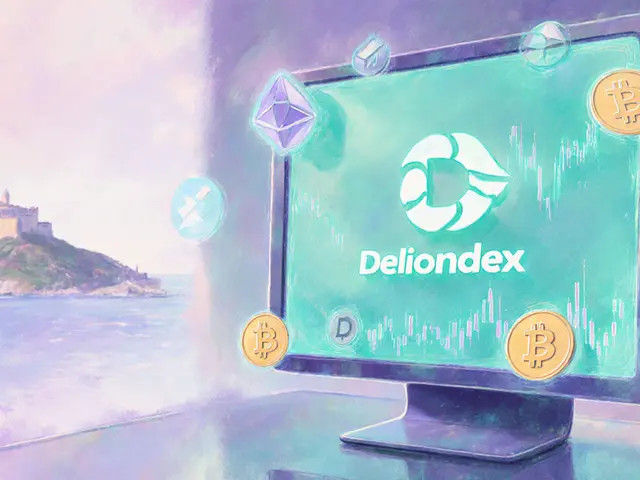Decentralized Content Platforms: How They Work, Top Options & Why They Matter

Decentralized Platform Selector
Select your primary goal and comfort level to discover the best decentralized platform for you.
Recommended Platform:
Top Platforms Overview:
Mastodon
Federated microblogging
ActivityPub No native rewardsLens Protocol
Token-based social graph
Ethereum/Polygon Token rewardsSteemit
Blockchain-driven publishing
Steem blockchain STEEM tokensDiaspora*
Privacy-focused social network
ActivityPub No native rewardsMirror
Web3 publishing platform
Ethereum NFT salesKey Takeaways
- Decentralized content platforms move data and moderation away from single corporations to a network of users and nodes.
- Core tech includes blockchain, peer‑to‑peer networking, and the ActivityPub protocol.
- Popular choices today are Mastodon, Lens Protocol, Steemit, Diaspora*, and Mirror.
- Benefits: privacy, data ownership, direct crypto monetization, and community‑driven governance.
- Challenges: learning curve, smaller audiences, and the need for better recommendation tools.
What Are Decentralized Content Platforms?
When you hear the term Decentralized Content Platform is a network‑based service where no single company controls the data, moderation policies, or revenue flow, think of it as a social media site that lives on many computers instead of one corporate data center. Users either run their own nodes or connect to community‑run servers, and the rules are enforced by code or community consensus rather than a top‑down board.
This model grew fast in 2024‑2025 as people grew tired of data‑mining giants, sudden policy bans, and opaque algorithms. The promise is simple: keep your posts, followers, and earnings in your hands, not a hidden server.
Core Technologies Behind the Movement
The backbone of decentralized content platforms is a mix of three tech families:
- Blockchain is a tamper‑proof ledger that records transactions and content hashes across many validators. It brings immutability and native crypto payments.
- Peer‑to‑Peer (P2P) is a direct networking model where each node can share data without a central hub. P2P reduces single points of failure and improves resilience.
- ActivityPub is an open, federated protocol that lets independent servers exchange posts, follows, and likes. It powers the biggest federated social networks.
When these layers combine, you get a platform that can store content permanently on a chain, route messages through a mesh of nodes, and still talk to users on other servers as if they were on the same site.
Leading Platforms to Explore
Below are the most widely used projects as of late 2025. Each one leans on a different slice of the tech stack, so you can pick the vibe that matches your goals.
Mastodon is a federated micro‑blogging network built on the ActivityPub protocol
Think of Mastodon as the Twitter‑style cousin of email. Users sign up on an "instance" (a community‑run server) and can follow accounts on any other instance. Data never lives on a single corporate cloud; it stays on the server that hosts your account. The platform is free, open‑source, and offers moderation tools that each instance can tailor.
Lens Protocol is a blockchain‑native social graph that gives creators token‑based ownership of their content and follower relationships
Lens treats every follow, like, or post as an NFT‑like object on the Polygon network. Creators earn crypto when others interact with their work, and they can move their whole audience to a new front‑end without losing followers. The protocol also supports decentralized identity (DID) standards, so log‑ins are wallet‑based.
Steemit is a blockchain‑driven publishing platform where posts and comments earn STEEM tokens
Steemit is one of the earliest blockchain social sites. After you publish, the community votes, and the platform distributes newly minted tokens based on the vote weight. The token can be traded on exchanges, giving creators a direct revenue stream without ads.
Diaspora* is a distributed social network that lets users host their own pods or join community‑run pods
Diaspora* focuses on privacy. Your profile lives on the pod you choose, and you retain full control over who sees what. The software is open‑source, and the federation works via the ActivityPub‑compatible "filtering" system.
Mirror is a Web3 publishing platform that lets writers mint articles as NFTs and raise funds through crypto
Mirror blends blogging with token economics. Authors can create "publications" that issue their own ERC‑20 tokens, sell access to premium posts as NFTs, or run community‑funded grants. The platform is built on Ethereum, so every piece of content gets an immutable hash on the chain.

Benefits vs. Drawbacks
Understanding the trade‑offs helps you decide whether to jump in now or wait for the next wave.
Benefits
- Privacy & security: Data is encrypted and stored across many nodes, making large‑scale breaches harder.
- Ownership: Your posts, followers, and crypto earnings stay with you, even if a server shuts down.
- Monetization: Direct token rewards, tipping, and NFT sales bypass ad networks.
- Governance: Community voting or DAO structures let users shape moderation rules.
- Interoperability: ActivityPub lets you move between Mastodon, Diaspora*, and other federated sites without losing contacts.
Challenges
- Learning curve: Managing wallets, choosing instances, or understanding token economics can be intimidating.
- Network effects: Smaller user bases mean fewer eyeballs on your content unless you cross‑post.
- Content discovery: No big‑tech recommendation engine, so creators rely on community curation.
- Scalability: Blockchain fees and latency can spike during high demand, affecting posting speed.
- Regulatory uncertainty: Crypto‑based rewards face evolving legal scrutiny in many jurisdictions.
Getting Started: A Step‑by‑Step Checklist
- Pick a platform that matches your goal. Want micro‑blogging? Try Mastodon. Want token rewards? Lens or Steemit.
- Create a wallet. For blockchain platforms you’ll need a crypto wallet (MetaMask, Trust Wallet, etc.). Write down the seed phrase securely.
- Choose a server or pod. On Mastodon, browse "instance directories" for a community that fits your interests. On Diaspora*, pick a pod that respects your privacy standards.
- Set up your profile. Upload a picture, write a bio, and link your wallet if the platform supports it.
- Publish your first piece of content. Experiment with a short post, a blog entry, or an NFT‑minted article.
- Engage the community. Follow creators you admire, comment, and tip where possible. Interaction builds visibility faster than relying on algorithms.
- Track earnings. Most platforms have a dashboard that shows earned tokens, pending withdrawals, and conversion rates.
By the end of this checklist you should have a living account that truly belongs to you.
Choosing the Right Platform: Quick Comparison
| Platform | Tech Base | Primary Monetization | Ease of Onboarding | Community Size |
|---|---|---|---|---|
| Mastodon | ActivityPub federation | None (optional tips) | Low - sign‑up on any public instance | ~10M monthly active users |
| Lens Protocol | Ethereum/Polygon blockchain | Token rewards, NFT sales | Medium - wallet & profile setup required | ~250k creators |
| Steemit | Steem blockchain | STEEM token payouts | Medium - wallet needed but UI is simple | ~1M active users |
| Diaspora* | ActivityPub federation (pods) | None (self‑hosted ads optional) | Medium - choose or run a pod | ~500k users |
| Mirror | Ethereum blockchain | NFT sales, token‑backed grants | High - web UI hides most blockchain steps | ~150k writers |
Pick the row that aligns with your technical comfort level and how you want to earn.
Future Outlook: Where Is the Space Headed?
Several trends suggest that decentralized content platforms will keep gaining traction through 2026:
- User‑centric UI upgrades: New onboarding flows hide wallet setup behind one‑click "Connect Wallet" buttons, lowering the barrier for non‑tech users.
- Hybrid models: Projects like Bluesky are combining familiar feeds with open‑source federation, giving mainstream users a gentle transition.
- Regulatory clarity: As governments issue guidance on crypto‑based rewards, platforms are adding KYC layers that still respect privacy.
- Scalable layer‑2 solutions: Polygon, Arbitrum, and zk‑rollups cut transaction fees, making micro‑tips affordable.
- Interoperability standards: ActivityPub 2.0 and emerging DID specifications aim to let your profile jump between Mastodon, Lens, and even future VR‑social hubs without rebuilding your network.
If these forces continue, the next wave could look like a "social OS" where you own a portable identity, move your data seamlessly, and get paid in real‑time, all without a single corporate gatekeeper.
Frequently Asked Questions
What makes a platform “decentralized”?
A decentralized platform stores data across many independent nodes, lets users run or join those nodes, and applies governance rules that aren’t dictated by a single corporate entity. In practice this means you keep control of your content, identity, and earnings.
Do I need crypto knowledge to use Mastodon?
No. Mastodon runs on the ActivityPub protocol and works like any other micro‑blogging site. You only need crypto if you join a token‑based platform like Lens or Steemit.
How are creators paid on these platforms?
Payments usually come from native tokens (e.g., STEEM, LENS) or NFTs. Users tip, vote, or purchase access, and the smart contract automatically routes the reward to the creator’s wallet.
Can I migrate my followers to a new platform?
Yes, if the platforms share a federation standard like ActivityPub. Your address (e.g., @[email protected]) can be followed on any other compatible server, preserving your network.
Is my data safe from government censorship?
Decentralization makes large‑scale takedowns harder, but not impossible. If a government pressures enough nodes in a region, local access can be restricted. However, the content remains on other nodes worldwide.







Decentralized platforms give us back control over our data, and that's a win for everyone.
Looks like another buzzword list 🙄
While the hype surrounding decentralized content platforms is palpable, it is essential to scrutinize the underlying mechanisms that grant them legitimacy. First, the use of blockchain ensures an immutable ledger, preventing unilateral alterations of content. Second, activity‑pub federation allows disparate servers to communicate seamlessly, fostering a networked ecosystem rather than a siloed monolith. Third, token‑based incentive structures create tangible rewards for creators, aligning economic interests with platform health. Moreover, the governance models, often encapsulated in decentralized autonomous organizations, enable community‑driven policy decisions without a central authority. However, these advantages come with trade‑offs, notably the steep learning curve associated with wallet management and private key security. Users unfamiliar with cryptographic concepts may find onboarding daunting, potentially limiting mainstream adoption. Additionally, the reliance on on‑chain transactions introduces latency and transaction fees, which can impede real‑time interactions. Scalability remains a pressing concern; as user volume grows, network congestion could degrade performance. Regulatory ambiguity further complicates matters, as jurisdictions grapple with the classification of native tokens. Despite these challenges, the trajectory of decentralized platforms suggests a gradual maturation of tooling and user experience. Emerging layer‑2 solutions are already mitigating fee pressures, and UI improvements hide technical complexity behind familiar interfaces. In sum, while decentralized content platforms are not a panacea, they represent a substantive shift toward user sovereignty and resilience against corporate overreach. Future iterations will likely integrate decentralized identity standards, granting seamless portability across services. Ultimately, community engagement and open‑source contributions will dictate the sustainability of this ecosystem.
Jumping into the world of decentralized media can feel like stepping onto a rocket, but the thrill is worth the ride. First, you get to own every post, like a digital fingerprint you control. Second, the token rewards turn your passion into actual crypto, which is a game‑changer for creators. Third, community governance means your voice matters in shaping the rules. Don’t let the tech jargon scare you; many platforms hide the complexity behind slick apps. Keep experimenting, and you’ll find the sweet spot where creativity meets freedom.
Decentralized platforms let you share content without a middleman they give you control and direct rewards are possible but you still need to learn a bit about wallets and keys
It is clear that Western tech giants have tried to dominate our digital lives and the rise of home‑grown decentralized networks is a direct rebuke to that hegemony
interesting look at how activitypub and blockchain intersect it seems like a niche but growing space for people who care about privacy
The tapestry of decentralized content platforms weaves together threads of technology, philosophy, and economics into a vibrant mosaic that beckons the curious soul. At its heart lies the promise of data sovereignty, a concept that resonates deeply in an era where personal information is commodified daily. When you explore Mastodon, you discover a federated micro‑blogging universe where each instance operates like a self‑governing city, complete with its own culture and rules. Lens Protocol, on the other hand, dazzles with tokenized social graphs that turn followers into valuable digital assets, granting creators unprecedented leverage. Steemit introduces a rewarding cadence where every upvote ripples into tangible STEEM tokens, turning applause into earnings. Diaspora* champions privacy by allowing users to host personal pods, thereby reclaiming the narrative of their digital footprint. Mirror elevates the writer’s craft by minting articles as NFTs, merging literature with blockchain artistry. The underlying ActivityPub protocol acts as the lingua franca, enabling seamless communication across disparate networks, much like a universal translator for social media. Meanwhile, blockchain layers such as Ethereum and Polygon inject immutability and programmable incentives, ensuring that nothing vanishes without a trace. Yet, the journey is not without obstacles; the learning curve for wallet management can feel like deciphering an ancient script, and transaction fees occasionally loom like tollbooths on the information highway. Community governance, often structured through DAOs, offers a democratic avenue for policy shaping, though consensus can be as elusive as a gentle breeze. Scalability solutions, including layer‑2 rollups, are emerging to smooth out congestion, promising faster and cheaper interactions. As regulatory landscapes evolve, platforms must navigate a maze of compliance while preserving the ethos of freedom. In this dynamic ecosystem, creators stand at the frontier, wielding tools that transform passive consumption into active participation. The future, painted with hues of decentralization, hints at a world where digital expression thrives unshackled, vibrant, and truly yours.
All this hype ignores the fact that tokenomics are still speculative nonsense.
The so‑called “privacy” of these networks is a myth, a veil over the same surveillance we’ve always endured. You think you’re safe because you control a key, but data leaks happen anyway. Stop romanticizing a broken system and face reality.
Starting with a user‑friendly instance on Mastodon is a solid first step; the onboarding is straightforward and you can explore the community at your own pace.
When we observe the convergence of blockchain and federated protocols, we witness a cultural shift toward distributed storytelling, reshaping how narratives propagate.
One must question whether the purported democratization is merely a veneer for underlying elitist gatekeeping.
Keep experimenting with these platforms-you’ll discover tools that amplify your voice beyond traditional walls!
Excellent breakdown! To add, the modular smart‑contract architecture within Lens can be leveraged for custom reward distribution, enhancing creator autonomy further.
We chase decentralization like a mirage, believing it will absolve us of responsibility. Yet every node is a decision point, and decisions carry weight. The illusion of anonymity masks the underlying power structures that persist. In the end, freedom is a practice, not a platform. Reflect on what you truly value in digital interaction.
The claim that decentralization returns control is naive; in practice, power simply shifts to those who control the most computational resources and token holdings.
While the narrative sounds uplifting, the reality is that network effects remain weak, limiting any real impact on mainstream discourse.